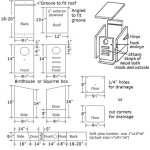Drawing a house plan is the process of creating a detailed, scaled diagram of the layout and structure of a house. This plan serves as a blueprint for the construction of the house and provides a comprehensive overview of its design and specifications.
House plans are essential for obtaining building permits, communicating with contractors, and ensuring that the finished home meets the owner’s requirements. They typically include floor plans, elevations, and cross-sections that illustrate the size, shape, and arrangement of rooms, walls, windows, doors, and other architectural elements.
Transition Paragraph:
In this article, we will delve into the process of drawing a house plan, providing step-by-step guidance on the tools and techniques involved. We will cover the essential elements of a house plan, from determining the scale and selecting the right materials to drafting the floor plans, elevations, and cross-sections.
Drawing a house plan involves several important considerations that ensure accuracy, clarity, and adherence to building codes.
- Determine the scale: Choose the appropriate scale for your plan, such as 1/4 inch = 1 foot.
- Select the right materials: Use high-quality paper, drafting pencils, and other tools for precision.
- Draw the floor plans: Create detailed drawings of each floor, including room dimensions, walls, windows, and doors.
- Draft the elevations: Show the exterior walls of the house from different sides, indicating windows, doors, and other features.
- Draw the cross-sections: Illustrate the vertical structure of the house, including foundations, walls, and roof.
- Label all elements: Clearly identify rooms, doors, windows, and other features on your plan.
- Include dimensions: Mark the length, width, and height of all rooms and structural elements.
- Add notes: Provide additional information, such as material specifications or construction details.
- Obtain professional review: Consider having your plans reviewed by an architect or engineer for accuracy and compliance with building codes.
By following these guidelines, you can create a comprehensive and informative house plan that will serve as a valuable tool for construction and communication.
Determine the scale: Choose the appropriate scale for your plan, such as 1/4 inch = 1 foot.
Determining the scale of your house plan is a crucial step as it affects the accuracy and usability of the plan. The scale refers to the ratio between the size of the drawing and the actual size of the house. Choosing the right scale ensures that your plan is legible, detailed, and building codes.
- Accuracy: An appropriate scale allows you to represent the dimensions and details of the house accurately. It helps avoid errors and ensures that the plan is a reliable guide for construction.
- Clarity: A well-chosen scale makes the plan easy to read and understand. It prevents overcrowding or excessive detail that can obscure important information.
- Building codes: Many building codes specify the minimum scale required for house plans submitted for permits. Choosing a scale that meets these requirements ensures that your plan is acceptable to local authorities.
- Common scales: Common scales used for house plans include 1/4 inch = 1 foot, 1/8 inch = 1 foot, and 1/2 inch = 1 foot. The choice of scale depends on the size and complexity of the house.
Once you have determined the appropriate scale, consistently apply it throughout the plan. This ensures that all measurements and dimensions are accurate and proportional. A clear scale notation should also be included on the plan for easy reference.
Select the right materials: Use high-quality paper, drafting pencils, and other tools for precision.
Selecting the right materials is essential for creating a precise and accurate house plan. The quality of the paper, drafting pencils, and other tools you use will impact the clarity, durability, and overall effectiveness of your plan.
- High-quality paper: Choose a smooth, durable paper that is specifically designed for architectural drawings. This type of paper will resist tearing, smudging, and fading, ensuring that your plan remains legible and intact throughout the design and construction process.
- Drafting pencils: Drafting pencils come in a range of lead grades, allowing you to create lines of varying darkness and thickness. Select pencils with a sharp point to ensure precision and accuracy in your drawings. Mechanical pencils are a good option as they provide a consistent line width and do not require sharpening.
- T-square or drafting machine: A T-square or drafting machine is used to draw straight lines and ensure accurate angles. These tools help you create precise floor plans, elevations, and cross-sections.
- Scale ruler: A scale ruler is an essential tool for measuring and transferring dimensions accurately. Choose a scale ruler that corresponds to the scale of your plan.
By using high-quality materials and tools, you can create a house plan that is clear, accurate, and professional-looking. These materials will help you produce a plan that effectively communicates your design intent and serves as a valuable guide for construction.
Draw the floor plans: Create detailed drawings of each floor, including room dimensions, walls, windows, and doors.
Floor plans are essential components of a house plan, providing a detailed layout of each level of the house. They show the arrangement of rooms, walls, windows, doors, and other architectural elements, giving a clear understanding of the spatial relationships within the house.
- Accurate dimensions: Floor plans must accurately represent the dimensions of each room, including the length, width, and height. This information is crucial for construction purposes, ensuring that the house is built to the correct specifications.
- Wall placement: Floor plans clearly indicate the placement of all walls, both interior and exterior. This includes load-bearing walls, partition walls, and any other structural elements that define the shape and layout of the house.
- Window and door openings: Windows and doors are essential elements of any house plan. Floor plans show the location, size, and type of each window and door opening, ensuring proper ventilation, natural light, and access to different areas of the house.
- Room labels and annotations: To enhance clarity and functionality, floor plans should include labels for each room, such as “living room,” “kitchen,” or “bedroom.” Additional annotations can provide information about specific features or finishes, such as built-in closets, fireplaces, or flooring materials.
By following these guidelines, you can create floor plans that are accurate, informative, and easy to understand. These plans will serve as a valuable tool for visualizing the layout of the house, communicating design intent, and guiding the construction process.
Draft the elevations: Show the exterior walls of the house from different sides, indicating windows, doors, and other features.
Elevations are orthogonal projections that show the exterior walls of the house from different sides. They provide a clear understanding of the overall height, shape, and proportions of the house, as well as the placement of windows, doors, and other architectural elements on each side.
To draft elevations, start by drawing the outline of the house as seen from the front, side, and rear. Accurately represent the height and width of the house, as well as the location of doors and windows. Include details such as rooflines, chimneys, porches, and any other significant exterior features.
Indicate the location and size of windows and doors on each elevation. Pay attention to the height of window sills and the width of door openings. Show the swing direction of doors and the type of windows used, such as casement, double-hung, or sliding.
Elevations should also include dimensions and annotations to provide additional information. Mark the overall height and width of the house, as well as the height of each story. Add notes to specify materials, finishes, or any other relevant details that cannot be easily represented graphically.
By following these guidelines, you can create elevations that are accurate, informative, and visually appealing. These elevations will complement the floor plans and provide a comprehensive overview of the exterior design of the house.
Draw the cross-sections: Illustrate the vertical structure of the house, including foundations, walls, and roof.
Cross-sections are vertical slices through the house that show the interior construction and the relationship between different levels. They provide valuable insights into the structural components of the house, such as the foundations, walls, and roof, as well as the placement of interior elements like stairs, fireplaces, and built-in cabinetry.
- Foundation details: Cross-sections clearly illustrate the type of foundation used for the house, whether it be a slab-on-grade, crawl space, or basement. They show the depth and width of the foundation walls, as well as any footings or piers that support the structure.
- Wall construction: Cross-sections reveal the framing and construction of the exterior and interior walls. They indicate the size and spacing of studs, the location of insulation, and the placement of windows and doors within the wall assembly.
- Roof structure: Cross-sections show the type of roof structure used, such as a gable, hip, or flat roof. They illustrate the pitch of the roof, the framing members, and the placement of insulation and roofing materials.
- Interior elements: Cross-sections can also include details of interior elements, such as stairs, fireplaces, and built-in cabinetry. They show the location, dimensions, and construction of these features, providing a comprehensive understanding of the interior layout and space planning.
By including cross-sections in your house plan, you provide a detailed and informative representation of the vertical structure of the house. These sections are essential for understanding the overall design and construction of the house, and they serve as a valuable tool for contractors and builders during the construction process.
Label all elements: Clearly identify rooms, doors, windows, and other features on your plan.
Labeling all elements on your house plan is crucial for clarity and ease of understanding. It helps identify and distinguish different spaces, openings, and features, ensuring that the plan is comprehensive and informative.
Start by labeling each room with its designated use, such as “living room,” “kitchen,” or “bedroom.” This helps builders and contractors quickly identify the purpose of each space and plan accordingly.
Label all doors and windows, indicating their swing direction and type. For doors, specify whether they are hinged, sliding, or bifold. For windows, indicate whether they are casement, double-hung, or awning. This information is essential for proper installation and functionality.
Extend labeling to other significant features, such as stairs, fireplaces, built-in cabinetry, and plumbing fixtures. Clearly indicate the location and dimensions of these elements to avoid confusion during construction.
By following these guidelines, you can create a well-labeled house plan that effectively communicates your design intent and provides a clear roadmap for builders and contractors to follow. A well-labeled plan minimizes errors, streamlines the construction process, and ensures that the finished house meets your specifications.
Include dimensions: Mark the length, width, and height of all rooms and structural elements.
Including dimensions on your house plan is essential for accurate construction and to ensure that the finished house meets your specifications. Dimensions provide precise measurements for every room and structural element, eliminating guesswork and preventing costly errors during construction.
- Overall dimensions: Indicate the overall length, width, and height of the house. This provides a general understanding of the size and scale of the building.
- Room dimensions: Mark the length, width, and height of each room. This information is crucial for determining the appropriate furniture layout, space planning, and material quantities.
- Structural dimensions: Include dimensions for structural elements such as walls, columns, beams, and roof trusses. These dimensions ensure that the structure is properly engineered and can safely support the weight of the house.
- Window and door dimensions: Specify the height, width, and location of all windows and doors. This information ensures that the correct size and type of windows and doors are ordered and installed.
By including accurate dimensions on your house plan, you provide a clear and detailed guide for builders and contractors to follow. This helps avoid costly mistakes, ensures structural integrity, and guarantees that the finished house meets your design intent and functional requirements.
Add notes: Provide additional information, such as material specifications or construction details.
Adding notes to your house plan is an effective way to convey additional information that cannot be easily represented graphically. These notes can include material specifications, construction details, or any other relevant information that will assist builders and contractors during construction.
Material specifications provide details about the materials used in different parts of the house. For example, you can specify the type of wood used for framing, the grade of concrete used for the foundation, or the type of roofing material used. This information ensures that the correct materials are used and that the house is built to your desired standards.
Construction details provide specific instructions on how certain aspects of the house should be built. For example, you can include notes on how to frame a particular wall, how to install a specific type of window, or how to finish a particular surface. These details help to ensure that the house is built correctly and in accordance with your design intent.
In addition to material specifications and construction details, you can also include notes on other relevant information, such as the desired level of insulation, the location of utility connections, or any special requirements for the house. By providing clear and comprehensive notes, you can minimize the potential for errors and ensure that the finished house meets your expectations.
Overall, adding notes to your house plan is an essential step in the design process. By providing additional information on material specifications, construction details, and other relevant details, you create a more comprehensive and informative plan that will guide builders and contractors throughout the construction process.
Obtain professional review: Consider having your plans reviewed by an architect or engineer for accuracy and compliance with building codes.
Seeking professional review of your house plans is highly recommended to ensure their accuracy and compliance with building codes. A qualified architect or engineer can provide valuable insights and expertise that may not be readily apparent to the untrained eye.
- Accuracy verification: A professional review can identify any errors or inconsistencies in your plans, such as incorrect dimensions, structural flaws, or conflicts between different elements. This helps to prevent costly mistakes during construction and ensures that the final product meets your design intent.
- Code compliance: Building codes are essential regulations that govern the design and construction of houses to ensure safety and habitability. A professional review can verify that your plans adhere to all applicable building codes, reducing the risk of delays or setbacks due to non-compliance.
- Structural integrity: An architect or engineer can assess the structural integrity of your plans, ensuring that the house can safely withstand the loads and forces it will be subjected to, such as wind, snow, and seismic activity. This review helps to prevent structural failures and ensures the long-term durability of the house.
- Constructability: A professional review can also assess the constructability of your plans, identifying any potential challenges or complexities that may arise during construction. This feedback can help you refine your plans to ensure a smooth and efficient building process.
Overall, obtaining professional review of your house plans is a wise investment that can save you time, money, and potential headaches in the long run. A qualified architect or engineer can provide valuable insights and expertise to ensure that your plans are accurate, code-compliant, structurally sound, and constructible.










Related Posts








